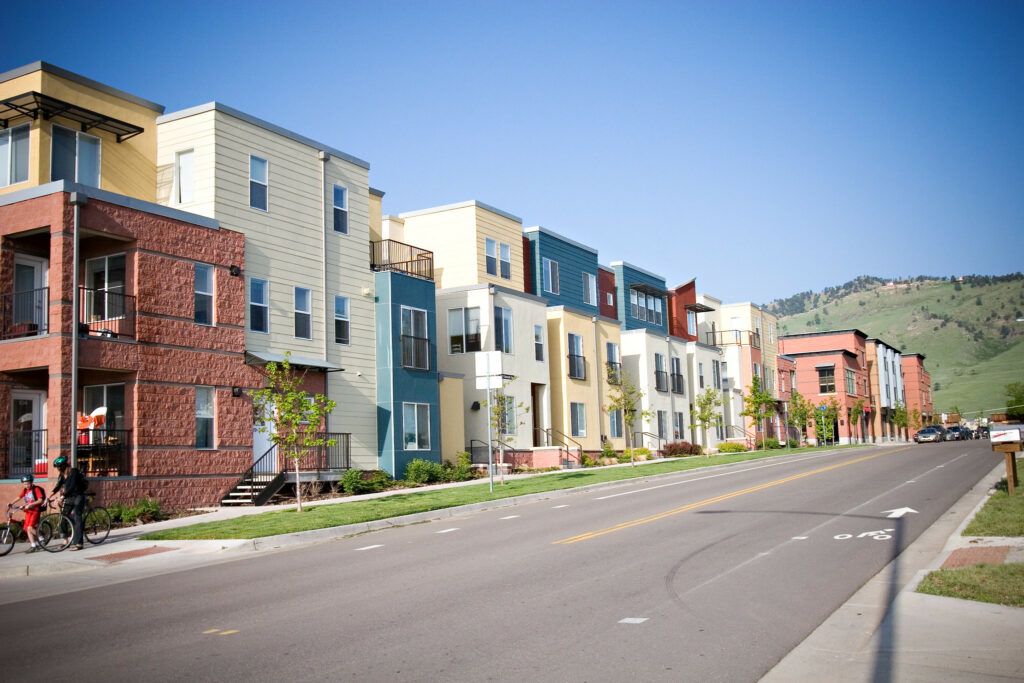
Sunday, March 31, 2019
Boulder’s elected officials on Tuesday will consider upping the city’s goal for affordable housing, as the entire region grapples with a worsening crisis in which 24% of homeowners and 61% of renters put more than a third of their income toward housing costs in 2017, according to census data.
Staff is recommending Boulder push its target to 15% from 10% — a goal set two decades ago and still 5-7 years away from being realized. Still, two city boards, as well as a small number of citizens, are urging council to aim higher.
Even a more modest jump will cost millions. A countywide goal of 12% affordable housing will require $400 million in extra funding, according to a regional group put together to confront the crisis.
That group is recommending a property tax increase, the revenue of which will be put in a countywide fund and distributed to cities based on population. But a preliminary survey shows a narrow sliver of majority support for the idea, casting doubt on whether the idea will pass muster come November’s election.
Boulder first established its affordable housing goal in 2000. The idea was to have 10% of the city’s total housing stock be financially attainable to low- and moderate-income earners. Given the slow pace of construction here, that figure remains roughly the same, at 4,500 homes.
The city to date has built or preserved 3,484 permanently affordable units, about 193 per year, or 7.5% of total homes. It will take 5-7 more years to reach the full 10%, according to staff estimates.
Getting to 15% by 2035 means adding another 4,008 affordable units total, or 251 per year. It’s a big ask based on pace alone. Boulder added only 1,653 dwellings total between 2010 and 2017, according to census data, an average of 206 affordable and market-rate homes per year.
Aside from opposition to development, cost is the biggest challenge to building affordable housing. It takes around $50,000 in government subsidies to preserve one unit as affordable, according to staff notes, and roughly double that to build a new affordable dwelling. Between $100,000 and $200,000 of local government funds are needed to create one home affordable to a middle-income buyer. (Market-rate rentals in Boulder are within range for middle-income earners, and therefore have largely do not need subsidized.)
Boulder’s share of the proposed regional property tax fund would pay for the creation of only 70 units annually.
The recently created Boulder County Regional Housing Partnership has its own goal of 12% affordable homes countywide by 2035. The group recommended that each city in the county adopt the 12% goal in turn.
Why staff settled on 15% is unclear. A spokesman for the city’s housing department did not respond to a request for comment Friday. Even as of last Monday, it appears they were not beholden to a specific target. In notes from the council’s weekly agenda-setting meeting, though the affordable housing item was listed, the target council would be deliberating was marked with an XX%, not a number.
In notes to council for Tuesday’s meeting, the current recommendation is explained as an attempt to set an achievable goal. “Staff believes (15%) is a stretch while being pragmatic given the realities of creating and preserving affordable housing within the city,” it reads.
Boulder’s Housing Advisory Board wanted to aim even higher, recommending a 20% target. At board and commission interviews
in mid-March, vice chair Adam Swetlik said he felt it was appropriate “to reach a little bit, because we don’t get what we reach for.”
Chair Masyn Moyer on Friday said HAB felt 20% was more than aspirational. It could become attainable if the city looked beyond funding as a way to achieve its aims.
Regulatory changes to zoning, increased occupancy limits, higher taxes on second homes, further relaxation on accessory dwelling units — these were all discussed by the board as alternative ways to increase affordability in Boulder. None of them were advanced with staff’s recommendations.
It’s unclear whether the regional partnership has contemplated or discussed similar policy changes. Two separate spokespersons for the group did not respond to requests for comment Friday.
“We’re only sticking ourselves at 15% because we’re too afraid to ask the bigger questions,” Moyer said. “There are policies in place that if they change, 20% would be easy.”
Staff did note that public engagement with HAB on the topic was “limited,” though residents who provided feedback were evenly split between those who supported a higher goal and those who were comfortable with staff’s 15% recommendation. Planning Board also gave unanimous support to the staff-suggested target.
Members of council early this year rejected HAB’s suggestion of looking at Boulder’s occupancy limit, which allows no more than three unrelated persons to live in the same home. Councilmen Bob Yates and Sam Weaver said that such a “political” question should be saved for the ballot, and councilwomen Lisa Morzel and Mirabai Nagle chastised the board for deviating from council’s workplan, saying it should pursue topics only as directed by elected officials.
Boulder’s slow-growth policies have recently been attracting criticism from outside the city. Housing activist and author Randy Shaw, in his book “Generation Priced Out: Who Gets to Live in the New Urban America,” held the city up as an example where exclusionary zoning exacerbates affordability challenges and perpetuates historical racial inequalities.
During a tour stop at Boulder Book Store, he lambasted homeowner opposition to denser living and contrasted the city with places like Minneapolis, which recently outlawed single-family residential zoning. His remarks drew a defense of Boulder’s approach from Mayor Suzanne Jones.
In a Daily Camera article, she outlined the city’s numerous efforts, from strict inclusionary housing requirements
to laxer regulations on rent-restricted ADU
s. These are example of “creative” approaches to housing that Boulder is embracing, she said.
“That’s why we have a Housing Advisory Board,” she told the Camera, “and we’re having those conversations about how bold we want to be.”
HAB is not the first body to recommend a loftier goal for affordability. During a 2017 update of the Boulder Valley Comprehensive Plan, the Planning Board also suggested a 20% target, staff noted to council.
“At the time,” reads the council memo, “City Council commended the aspiration of the goal but did not approve requesting further public process and analysis of factors to identify a goal that is both aspirational and achievable.”
This item will include a public hearing. Sign-up to speak during the hearing begins at 5 p.m. at council chambers.
City council meeting: 6 p.m. Tuesday, April 2, 1777 Broadway
Author’s note: This article has been updated to clarify that Minneapolis did away with single-family residential zoning districts, not development, and to clarify the range of costs to subsidize affordable housing, which were provided by the city after the meeting.
— Shay Castle, @shayshinecastle
Housing Adam Swetlik affordable housing Bob Yates Boulder Boulder County city council city of Boulder exclusionary zoning Generation Priced Out housing Housing Advisory Board Lisa Morzel Minneapolis Mirabai Nagle Sam Weaver single-family zoning Suzanne Jones

